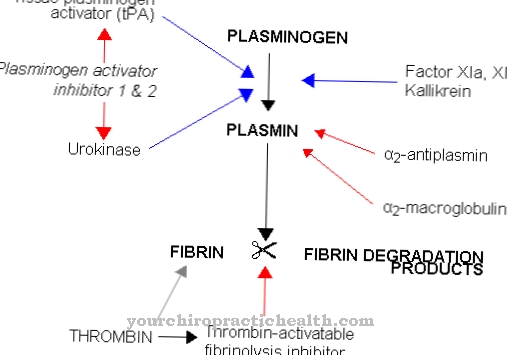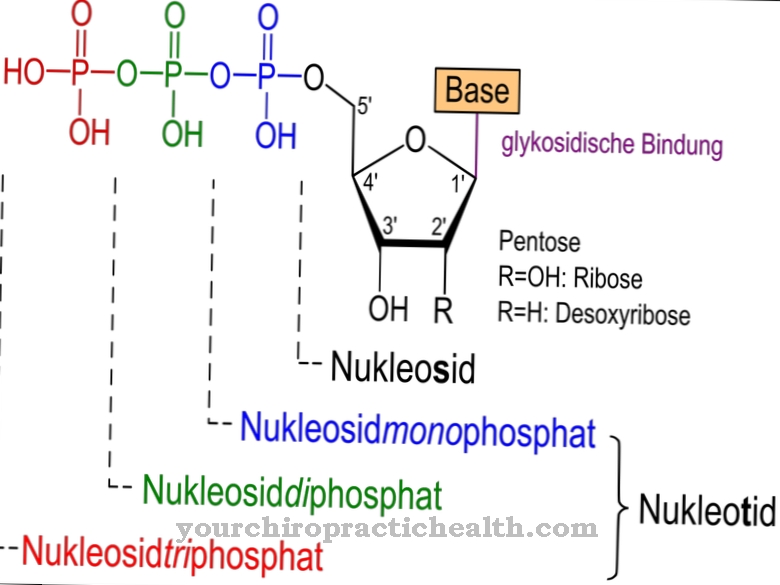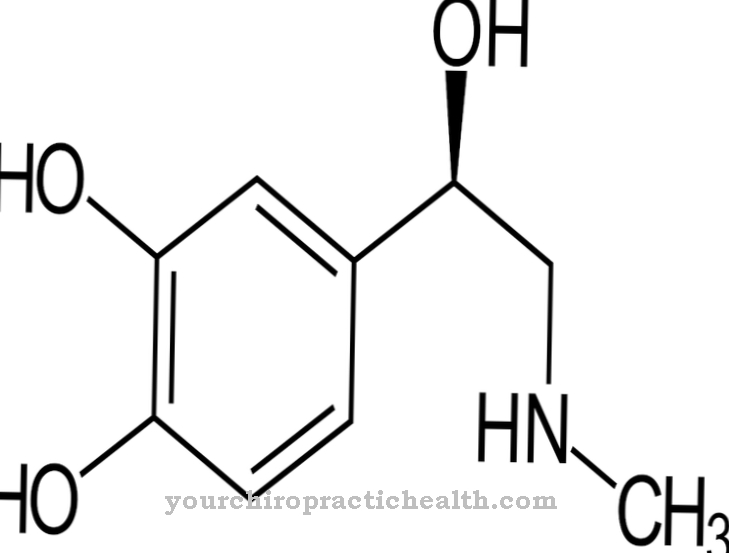Platelets, also called blood platelets, are among the cellular components of blood and play an important role in blood clotting and thus hemostasis. A low number of platelets in the blood results in an increased tendency to bleed, whereas an increased number increases the risk of clots forming in the blood vessels. The body's own number of thrombocytes can be determined using a simple blood test.
What are platelets?

In addition to erythrocytes and leukocytes, the Platelets to the cellular part of the blood. The flat, dented, seedless discs are formed in the bone marrow.
Its name is derived from ancient Greek and means "vessel" / "cavity" according to the platelet shape. Platelets are formed by pinching off so-called megakaryoblasts (also known as bone marrow giant cells). Each individual platelet is divided into a light outer area and a center that can be easily colored. In this center of the platelet are coagulation factors and cell organelles (cell structures).
After their average lifespan of around 10 days, they are broken down in the spleen and liver. Platelets are the smallest cells in the human body. Their size is only about 1-4 µm - they can therefore only be seen under a light microscope.
Measure blood values, blood tests & platelets
In healthy, adult women and men, there are around 150,000-350,000 platelets per µl of blood. The platelet count is determined as part of a blood count - with the help of fully automatic particle counters.
In this way, the doctor can determine whether the number of Platelets is in the normal range. An examination is recommended, for example, if there are symptoms of an increased tendency to bleed, before operations, after major blood losses, or if a thrombus is suspected (blockage of the bloodstream).
The function of the platelets can be tested on the basis of the bleeding time (time from the injury until the bleeding stopped).
Function, effect & tasks
After injuring a vessel, for example through a cut, they settle Platelets to the connective tissue fibers of the wound edges. This process is called platelet adhesion.
The individual platelets deform and clump together - this is known as platelet aggregation. This leads to the formation of a graft. The aim of the formation of this "wound plaster" is to close the wound and thus reduce blood loss. The platelets start blood coagulation by simultaneously releasing messenger substances - this leads to a further stabilization of the hemostatic plug.
If the platelets are disturbed in their function, or if their number is reduced, in the event of an injury it will take much longer for the bleeding to stop.
In addition, the platelets have an important function in the immune system. Through so-called endocytosis (absorption of foreign material into the cell), they absorb foreign substances from the blood before they lead to the triggering of a disease.
Diseases
A reduction in the platelet count (below 150,000 / µl) is known as thrombocytopenia and is associated with an increased tendency to bleed. In the event of an injury, bleeding will be prolonged or increased due to delayed hemostasis.
In mild cases, patients also complain of an increased incidence of bruises or frequent nosebleeds. The occurrence of petechiae is also characteristic - this is understood to be punctiform skin and mucous membrane bleeding. In severe cases (platelet concentration below 1,000 / µl), severe, sometimes life-threatening bleeding can occur.
The following factors can trigger thrombocytopenia: leukemia, chemotherapy, infectious diseases such as malaria, rubella or Helicobacter pylori, pregnancy, etc. The therapy for thrombocytopenia depends on the triggering cause. A life-threatening reduction in platelets can be compensated for by administering platelet concentrates.
In contrast, an increased number of platelets in the blood (over 1,000,000 / µl) is called thrombocytosis. In this context, the risk of clot formation with the consequence of vascular occlusion is increased. For example, when an infection is present, the body reacts with increased production of platelets.
An increase in blood platelets may therefore be an indication of inflammation. The body also reacts with thrombocytosis as a result of large blood losses (e.g. through operations) or heavy loads on the body (e.g. competitive sports).
You can find your medication here
➔ Medicines for wound treatment and injuries
























.jpg)



